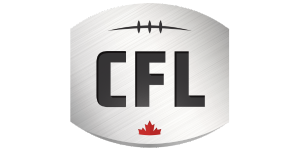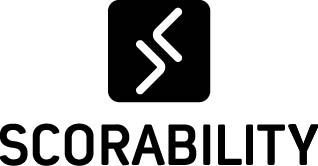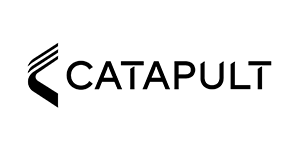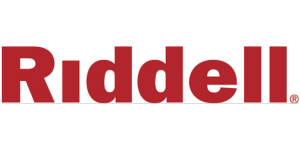
Are You Using the Right Coverage?
March 21, 2023
Cover Zero.
Cover One.
Cover Two Man.
Cover Two Zone.
Cover Three.
Cover Four.
Cover Five.
Cover Six.
Which type of coverage is best? As you coaches know better than we do, there is not one single defensive coverage that works well against every possible offensive formation or system that you may face. Each type of coverage listed above has its own strengths and weaknesses. That is why you spend hours analyzing film of your opponent and preparing your units to defend whatever the opposing offense may throw at you.
Similarly, while there are various types of life insurance, you must consider the goals and objectives that are unique to your personal situation when it comes to the risk management side of your financial planning. Just like each defensive coverage, each type of insurance has its own strengths and weaknesses. Some of those are highlighted here:
Term Life Insurance
Term life insurance is a specific type of life insurance that provides death benefit coverage (a payment to beneficiaries in the event of your death) over a predetermined period of time, generally 10 to 30 years. If you die during this time period, your named beneficiaries will obtain the benefit, and if not, they will receive nothing. Once the stated time period passes, you can either choose to renew the policy or let it expire.
The premium amount paid is based on your age, health, life expectancy, and other factors. To qualify for term life insurance and prove your insurability, you will likely need to take a medical assessment to aid the insurance company in approximating your lifespan and determining how much it will cost to insure you.
Whole Life Insurance
Whole life insurance is the simplest type of permanent life insurance which offers a fixed death benefit in exchange for fixed premium payments.
Whole life insurance has a cash value component which grows at a guaranteed rate over time according to a formula. Whole life insurance may pay dividends from the insurance company’s profits. These dividends provide cash and may be used to offset a portion of your insurance expense over time.
Universal Life Insurance
Universal life insurance parallels whole life insurance with its death benefit and cash value element. However, unlike whole life insurance, universal life insurance allows you to adjust your premiums and death benefit to fit your needs.
Universal life insurance is adaptable — under this policy, you are able to adjust the amount and timing of premiums. Flexibility additionally applies to your death benefit, which you can increase or decrease after the policy is already in force (increases will require you to provide evidence of your insurability).
With universal life insurance, the interest rate on your cash value component is subject to change by the insurance company, yet guaranteed to never fall below the guaranteed minimum interest rate defined in the policy.
Variable Universal Life Insurance
Variable universal life (VUL) insurance parallels universal life insurance in that it offers lifelong coverage, flexibility, and cash value. However, it provides more investment options for the policy’s cash value.
Cash value can be invested in certain “sub-accounts” offered by the insurance company. Sub-accounts can be thought of as investment portfolios which are similar to mutual funds. Sub-accounts typically invest in various asset classes which may include stocks, bonds, derivatives, commodities, money market instruments, or other investments. Although sub-accounts are similar in many respects to mutual funds, fees and expenses can differ. Like mutual funds, you assume all of the risk related to your sub-account investments. Rates of return will mirror wider market trends and may give you a greater investment rate than whole life or universal life insurance—but with more risk.
Indexed Universal Life Insurance
Indexed universal life (IUL) insurance parallels universal life insurance in that it delivers death benefit protection, flexibility, and cash value.
Unlike whole life or universal life insurance policies, this type of permanent insurance potentially gives the opportunity for greater cash value growth since it is based on a market index. Policies generally offer a selection of well-known indices, such as the S&P 500; however, the policy’s cash value does not directly participate in any index. Even with a loss in index value, you may still have a guaranteed minimum interest rate.
A key benefit associated with many indexed universal life policies is that they provide downside market protection with an upside cap.
IUL policies are also associated with participation rates. A participation rate is the percentage of change in an index that your account receives, which is set by the insurance company and subject to change. There is a minimum index floor, which is the guaranteed amount of minimum account growth. If index performance is less than the minimum index floor, you will receive the minimum index floor amount. There is also a maximum index cap, which limits the upside of market performance. If the index gains are higher than the maximum index cap, you will get the increase up until the cap.
How Do You Know Which Type of (Life Insurance) Coverage is Best for You?
There is not one type of insurance that is the best fit for everyone. As we mentioned before, you must consider the goals and objectives that are unique to your personal situation when putting the best coverage into place.
As such, the best time to review your existing coverage or to consider buying coverage may be when you are:
- Purchasing a new home
- Starting a new career or business
- Reviewing your estate plan
- Getting married or divorced
- Expecting or adopting a child
Other than those common life events that should cause you to review your existing life insurance plan, here are some other possible benefits and uses for life insurance:
- An income-tax-free death benefit to your named beneficiaries
- An opportunity to accumulate assets on a tax-advantaged basis
- The death benefit which provides liquidity to help pay estate taxes as well as other outstanding bills and loans
- A source of funds for a child’s education, a new business or the down payment on a new house
- Additional riders that can help pay for long term care services, if needed
- Transferring business ownership upon death of business partners
Regardless of what type of insurance coverage you currently have, we suggest that you schedule a policy review with your Financial Advisor to determine if your existing coverage still fits your current needs. During the review, your Financial Advisor should also determine if your policy ownership and beneficiary designations are still in line with your legacy strategy.

Keith Norris

Matt Kuerzi
About the Authors
Keith Norris, First Vice President and Financial Advisor, and Matt Kuerzi, Vice President and Financial Advisor, are co-founders of The Derby City Group at Morgan Stanley in Louisville, Kentucky. They have combined over 40 years of experience helping families with their financial planning (1). In 2019, Matt was recognized by Forbes in their first ever list of “Best-In-State Next-Gen Advisors”. He can be reached directly at (502) 394-4094 or [email protected].
Branch address: 4969 U.S. Highway 42, Suite 1200, Louisville, KY 40222
(1) Keith Norris, First Vice President, Financial Advisor, experienced in the financial services industry since 1997. Matt Kuerzi, Vice President, Financial Advisor, experienced in the financial services industry since 2002.
(2) Source: http://www.morganstanley.com/ideas/retierment-savings-vs-education-savings
(3) Source: http://www.irs.gov/retirement-plans/plan-participant-employee/retirement-topics-401k-and-profit-sharing-plan-contribution-limits
(4) Source: http://www.irs.gov/newsroom/tax-benefits-for-education-information-center
(5) Source: https://www.savingforcollege.com/compare-529-plans
The information contained in this article is not a solicitation to purchase or sell investments. Any information presented is general in nature and not intended to provide individually tailored investment advice. The strategies and/or investments referenced may not be appropriate for all investors as the appropriateness of a particular investment or strategy will depend on an investor’s individual circumstances and objectives. Investing involves risks and there is always the potential of losing money when you invest.
Tax laws are complex and subject to change. Morgan Stanley Smith Barney LLC (“Morgan Stanley”), its affiliates and Morgan Stanley Financial Advisors and Private Wealth Advisors do not provide tax or legal advice and are not “fiduciaries” (under the Investment Advisers Act of 1940, ERISA, the Internal Revenue Code or otherwise) with respect to the services or activities described herein except as otherwise provided in writing by Morgan Stanley and/or as described at www.morganstanley.com/disclosures/dol. Individuals are encouraged to consult their tax and legal advisors (a) before establishing a retirement plan or account, and (b) regarding any potential tax, ERISA and related consequences of any investments made under such plan or account.
Source: Forbes.com (July, 2021). Top Next-Gen Wealth Advisors. SHOOK considered advisors born in 1981 or later with a minimum 4 years as an advisor. Advisors have: built their own practices and lead their teams; joined teams and are viewed as future leadership; or a combination of both. Ranking algorithm is based on qualitative measures: telephone and in-person interviews, client retention, industry experience, credentials, review of compliance records, firm nominations; and quantitative criteria, such as: assets under management and revenue generated for their firms. Investment performance is not a criterion because client objectives and risk tolerances vary, and advisors rarely have audited performance reports. Rankings are based on the opinions of SHOOK Research, LLC, and are not indicative of future performance or representative of any one client’s experience. Neither Morgan Stanley Smith Barney LLC nor its Financial Advisors or Private Wealth Advisors pay a fee to Forbes or SHOOK Research in exchange for the ranking. For more information, see www.SHOOKresearch.com.
Asset Allocation does not assure a profit or protect against loss in declining financial markets.
The views expressed herein are those of the author and do not necessarily reflect the views of Morgan Stanley Wealth Management or its affiliates. All opinions are subject to change without notice. Neither the information provided nor any opinion expressed constitutes a solicitation for the purchase or sale of any security. Past performance is no guarantee of future results.
Morgan Stanley Smith Barney LLC offers a wide array of brokerage and advisory services to its clients, each of which may create a different type of relationship with different obligations to you. Please visit us at http://www.morganstanleyindividual.com or consult with your Financial Advisor to understand these differences.
Morgan Stanley Smith Barney LLC. Member SIPC.
CRC 4841404 7/2022
For more information about the AFCA, visit www.AFCA.com. For more interesting articles, check out The Insider and subscribe to our weekly email.
If you are interested in more in-depth articles and videos, please become an AFCA member. You can find out more information about membership and specific member benefits on the AFCA Membership Overview page. If you are ready to join, please fill out the AFCA Membership Application.
« « Previous PostNext Post » »
Cover Zero.
Cover One.
Cover Two Man.
Cover Two Zone.
Cover Three.
Cover Four.
Cover Five.
Cover Six.
Which type of coverage is best? As you coaches know better than we do, there is not one single defensive coverage that works well against every possible offensive formation or system that you may face. Each type of coverage listed above has its own strengths and weaknesses. That is why you spend hours analyzing film of your opponent and preparing your units to defend whatever the opposing offense may throw at you.
Similarly, while there are various types of life insurance, you must consider the goals and objectives that are unique to your personal situation when it comes to the risk management side of your financial planning. Just like each defensive coverage, each type of insurance has its own strengths and weaknesses. Some of those are highlighted here:
Term Life Insurance
Term life insurance is a specific type of life insurance that provides death benefit coverage (a payment to beneficiaries in the event of your death) over a predetermined period of time, generally 10 to 30 years. If you die during this time period, your named beneficiaries will obtain the benefit, and if not, they will receive nothing. Once the stated time period passes, you can either choose to renew the policy or let it expire.
The premium amount paid is based on your age, health, life expectancy, and other factors. To qualify for term life insurance and prove your insurability, you will likely need to take a medical assessment to aid the insurance company in approximating your lifespan and determining how much it will cost to insure you.
Whole Life Insurance
Whole life insurance is the simplest type of permanent life insurance which offers a fixed death benefit in exchange for fixed premium payments.
Whole life insurance has a cash value component which grows at a guaranteed rate over time according to a formula. Whole life insurance may pay dividends from the insurance company’s profits. These dividends provide cash and may be used to offset a portion of your insurance expense over time.
Universal Life Insurance
Universal life insurance parallels whole life insurance with its death benefit and cash value element. However, unlike whole life insurance, universal life insurance allows you to adjust your premiums and death benefit to fit your needs.
Universal life insurance is adaptable — under this policy, you are able to adjust the amount and timing of premiums. Flexibility additionally applies to your death benefit, which you can increase or decrease after the policy is already in force (increases will require you to provide evidence of your insurability).
With universal life insurance, the interest rate on your cash value component is subject to change by the insurance company, yet guaranteed to never fall below the guaranteed minimum interest rate defined in the policy.
Variable Universal Life Insurance
Variable universal life (VUL) insurance parallels universal life insurance in that it offers lifelong coverage, flexibility, and cash value. However, it provides more investment options for the policy’s cash value.
Cash value can be invested in certain “sub-accounts” offered by the insurance company. Sub-accounts can be thought of as investment portfolios which are similar to mutual funds. Sub-accounts typically invest in various asset classes which may include stocks, bonds, derivatives, commodities, money market instruments, or other investments. Although sub-accounts are similar in many respects to mutual funds, fees and expenses can differ. Like mutual funds, you assume all of the risk related to your sub-account investments. Rates of return will mirror wider market trends and may give you a greater investment rate than whole life or universal life insurance—but with more risk.
Indexed Universal Life Insurance
Indexed universal life (IUL) insurance parallels universal life insurance in that it delivers death benefit protection, flexibility, and cash value.
Unlike whole life or universal life insurance policies, this type of permanent insurance potentially gives the opportunity for greater cash value growth since it is based on a market index. Policies generally offer a selection of well-known indices, such as the S&P 500; however, the policy’s cash value does not directly participate in any index. Even with a loss in index value, you may still have a guaranteed minimum interest rate.
A key benefit associated with many indexed universal life policies is that they provide downside market protection with an upside cap.
IUL policies are also associated with participation rates. A participation rate is the percentage of change in an index that your account receives, which is set by the insurance company and subject to change. There is a minimum index floor, which is the guaranteed amount of minimum account growth. If index performance is less than the minimum index floor, you will receive the minimum index floor amount. There is also a maximum index cap, which limits the upside of market performance. If the index gains are higher than the maximum index cap, you will get the increase up until the cap.
How Do You Know Which Type of (Life Insurance) Coverage is Best for You?
There is not one type of insurance that is the best fit for everyone. As we mentioned before, you must consider the goals and objectives that are unique to your personal situation when putting the best coverage into place.
As such, the best time to review your existing coverage or to consider buying coverage may be when you are:
- Purchasing a new home
- Starting a new career or business
- Reviewing your estate plan
- Getting married or divorced
- Expecting or adopting a child
Other than those common life events that should cause you to review your existing life insurance plan, here are some other possible benefits and uses for life insurance:
- An income-tax-free death benefit to your named beneficiaries
- An opportunity to accumulate assets on a tax-advantaged basis
- The death benefit which provides liquidity to help pay estate taxes as well as other outstanding bills and loans
- A source of funds for a child’s education, a new business or the down payment on a new house
- Additional riders that can help pay for long term care services, if needed
- Transferring business ownership upon death of business partners
Regardless of what type of insurance coverage you currently have, we suggest that you schedule a policy review with your Financial Advisor to determine if your existing coverage still fits your current needs. During the review, your Financial Advisor should also determine if your policy ownership and beneficiary designations are still in line with your legacy strategy.
 Keith Norris |
 Matt Kuerzi |
About the Authors
Keith Norris, First Vice President and Financial Advisor, and Matt Kuerzi, Vice President and Financial Advisor, are co-founders of The Derby City Group at Morgan Stanley in Louisville, Kentucky. They have combined over 40 years of experience helping families with their financial planning (1). In 2019, Matt was recognized by Forbes in their first ever list of “Best-In-State Next-Gen Advisors”. He can be reached directly at (502) 394-4094 or [email protected].
Branch address: 4969 U.S. Highway 42, Suite 1200, Louisville, KY 40222
(1) Keith Norris, First Vice President, Financial Advisor, experienced in the financial services industry since 1997. Matt Kuerzi, Vice President, Financial Advisor, experienced in the financial services industry since 2002.
(2) Source: http://www.morganstanley.com/ideas/retierment-savings-vs-education-savings
(3) Source: http://www.irs.gov/retirement-plans/plan-participant-employee/retirement-topics-401k-and-profit-sharing-plan-contribution-limits
(4) Source: http://www.irs.gov/newsroom/tax-benefits-for-education-information-center
(5) Source: https://www.savingforcollege.com/compare-529-plans
The information contained in this article is not a solicitation to purchase or sell investments. Any information presented is general in nature and not intended to provide individually tailored investment advice. The strategies and/or investments referenced may not be appropriate for all investors as the appropriateness of a particular investment or strategy will depend on an investor’s individual circumstances and objectives. Investing involves risks and there is always the potential of losing money when you invest.
Tax laws are complex and subject to change. Morgan Stanley Smith Barney LLC (“Morgan Stanley”), its affiliates and Morgan Stanley Financial Advisors and Private Wealth Advisors do not provide tax or legal advice and are not “fiduciaries” (under the Investment Advisers Act of 1940, ERISA, the Internal Revenue Code or otherwise) with respect to the services or activities described herein except as otherwise provided in writing by Morgan Stanley and/or as described at www.morganstanley.com/disclosures/dol. Individuals are encouraged to consult their tax and legal advisors (a) before establishing a retirement plan or account, and (b) regarding any potential tax, ERISA and related consequences of any investments made under such plan or account.
Source: Forbes.com (July, 2021). Top Next-Gen Wealth Advisors. SHOOK considered advisors born in 1981 or later with a minimum 4 years as an advisor. Advisors have: built their own practices and lead their teams; joined teams and are viewed as future leadership; or a combination of both. Ranking algorithm is based on qualitative measures: telephone and in-person interviews, client retention, industry experience, credentials, review of compliance records, firm nominations; and quantitative criteria, such as: assets under management and revenue generated for their firms. Investment performance is not a criterion because client objectives and risk tolerances vary, and advisors rarely have audited performance reports. Rankings are based on the opinions of SHOOK Research, LLC, and are not indicative of future performance or representative of any one client’s experience. Neither Morgan Stanley Smith Barney LLC nor its Financial Advisors or Private Wealth Advisors pay a fee to Forbes or SHOOK Research in exchange for the ranking. For more information, see www.SHOOKresearch.com.
Asset Allocation does not assure a profit or protect against loss in declining financial markets.
The views expressed herein are those of the author and do not necessarily reflect the views of Morgan Stanley Wealth Management or its affiliates. All opinions are subject to change without notice. Neither the information provided nor any opinion expressed constitutes a solicitation for the purchase or sale of any security. Past performance is no guarantee of future results.
Morgan Stanley Smith Barney LLC offers a wide array of brokerage and advisory services to its clients, each of which may create a different type of relationship with different obligations to you. Please visit us at http://www.morganstanleyindividual.com or consult with your Financial Advisor to understand these differences.
Morgan Stanley Smith Barney LLC. Member SIPC.
CRC 4841404 7/2022
For more information about the AFCA, visit www.AFCA.com. For more interesting articles, check out The Insider and subscribe to our weekly email.
If you are interested in more in-depth articles and videos, please become an AFCA member. You can find out more information about membership and specific member benefits on the AFCA Membership Overview page. If you are ready to join, please fill out the AFCA Membership Application.
















